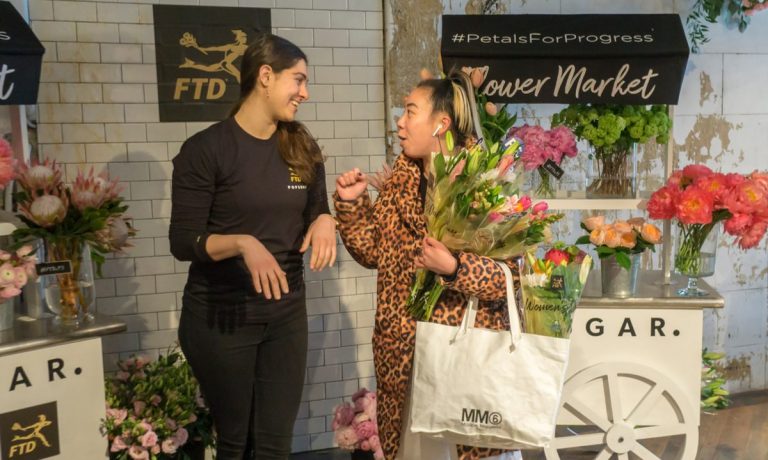Today, with new ownership and management in place, FTD is still meeting the floral gifting needs of consumers everywhere, only it’s doing so in a true 21st century digital fashion.
“I’ve been saying since I got here that FTD is not a flower company and has never been a flower company,” Chief Technology Officer Matt Powell told PYMNTS Editor-in-Chief Matt Nesto. “FTD is really a technology business. It feels like I am at the helm of a 115-year-old startup.”
That startup, he said, has undergone a major rapid reboot in order to better serve a dual customer base that is equally split between consumers and small businesses, and to do so, has leaned heavily on technology and data analytics to help it nip problems in the bud while nurturing positive trends, so they bloom and grow.
“We are laser focused, 100% of the time, on maximizing the value of a visit when we think about our consumer traffic,” Powell said.
Where FTD used to focus on units sold and top-line revenue, Powell said it was quickly obvious that some order categories were less profitable than others, and in some cases, were even money losers. After a period of focusing on sales with better margins, the company has made a data-driven decision to retool again.
Advertisement: Scroll to Continue
“The thing we’re working on for the new fiscal year, which starts in June, is optimizing to lifetime value per visit, and we do that regardless of what’s happening macroeconomically,” Powell said.
A Needle in a Digital Haystack
To make better sense of the roughly 7 million orders FTD processes each year, 70% of which come through its website, the company has leaned heavily into data-driven analytics and machine learning, under what is collectively known as digital experience intelligence (DXI).
Where once, post-sale analysis was limited to reviewing recorded phone calls, Powell said the present state of the art treats each visitor session “as a data artifact” that can be interacted with in a variety of ways after the fact.
“Our ability to run down problems and identify opportunities on the back of that [DXI] technology is transformative. I’ve never had a tool like this in 25 years of doing this, and it blows the doors off of the other things that I’ve used in the past,” Powell said, pointing to the real-time ability to monitor and react to actual customer interactions, moves and messages in each part of their journey.
For Atlanta-based DXI provider FullStory, which counts FTD and 3,200 other brands as customers, to perfect the digital experience requires comprehensive use of both quantitative and qualitative data whether it comes from a website, a Software-as-a-Service (SaaS) application or a mobile app.
“To understand the patterns of what 5,10, 50, 100,000 people that are doing the same thing, and then elevate that into insights so that product managers, [user experience (UX)] teams, designers, engineers, etc., can really understand where things are breaking up, and what is going well, and what you can double down on,” FullStory Chief Marketing Officer Kirsten Newbold-Knipp told PYMNTS.
Rage Clicks and Pinch Problems
One example of where things break up is what FullStory has coined as “rage clicks,” or those times when customers click on a button and it doesn’t work, causing many consumers to click it again and again. Clearly a source of frustration, but also in the eyes of DXI, a golden opportunity for improvement.
Newbold-Knipp said the same clues can be found within pinch and zoom analytics found on mobile devices.
“If 5,000 people pinched and zoomed on [something], it probably means your font is too small, or your image isn’t visible,” she said, noting the clear indication that something is going on in that part of the interaction that suggests customers clearly aren’t getting what they need from the app and, therefore, telling a product owner or product manager that they need to improve that experience.
On the proactive side, these DXI insights can also turn the seemingly random into the suddenly insightful. For example, during the pandemic, Lowe’s was able to piece together what appeared to be disparate and bizarre purchase behavior into a comprehensive conclusion, she said. Specifically, people were suddenly building home gyms, a discovery that led to the creation of a whole new category and a lucrative opportunity.
From the purview of FTD’s Powell, 30 years ago it was all walk-in business whereas today there are a dozen different ways that a florist connects with consumers, ranging from store, phone and website, to Uber, DoorDash, Facebook and pop-up stores at events.
“What I get excited about is that we can create the conditions where small businesses can execute across all these different commerce channels in a way that allows them to make money in the modern world,” Powell said.




